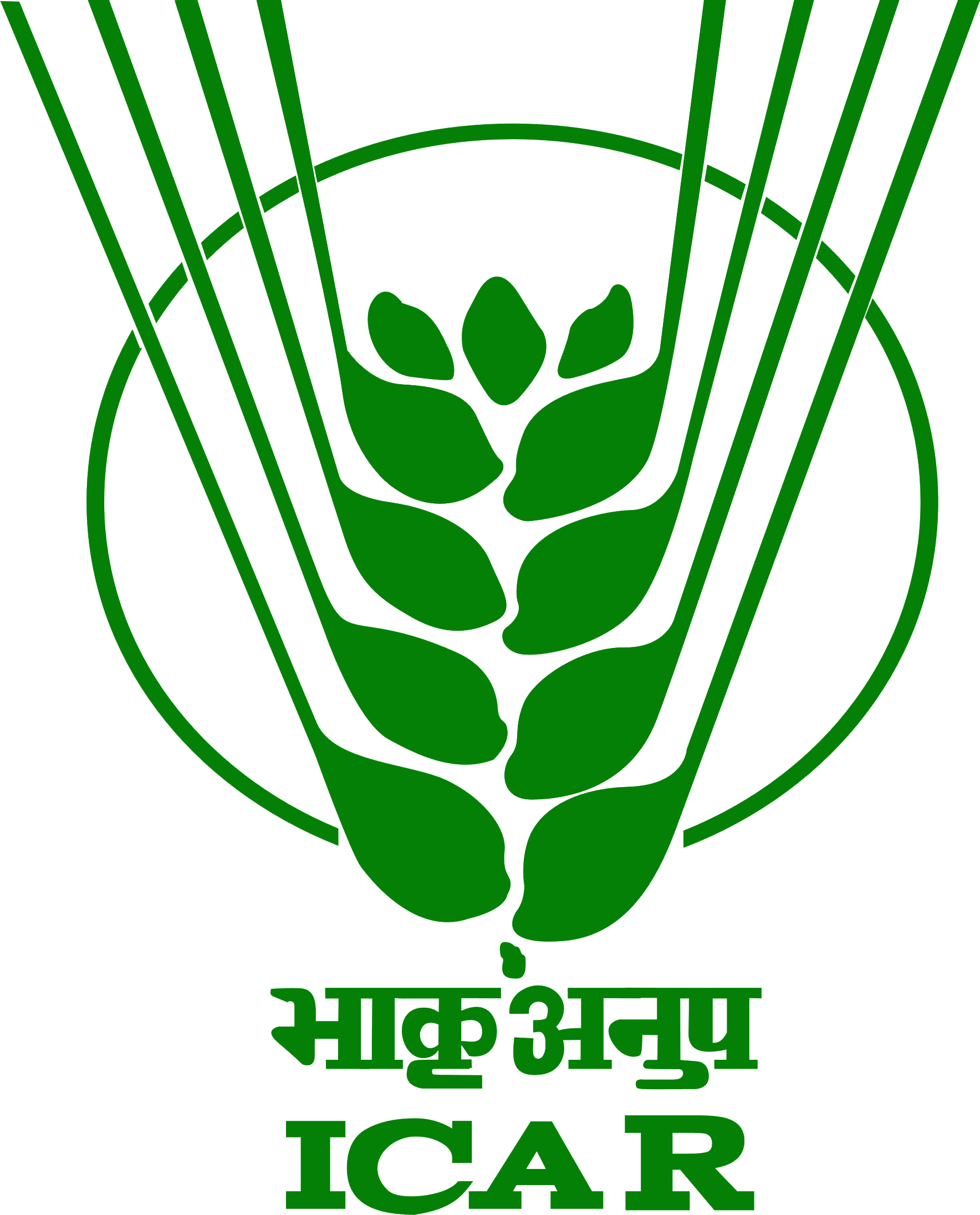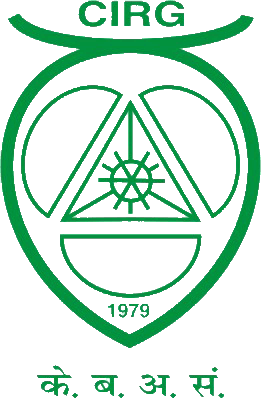|
Research Activities Carried out
A. Cross Breeding in Goat
1 Milk production
- Crossbreeding has been started in the country with exotic breeds to increase milk, meat and mohair production. Exotic breeds like Alpine, Saanen have been used for milk production and Angora for Mohair production.
- Crossbreeding of Beetal and Malabari with exotic breeds Alpine and Saanen was carried out to increase milk production. Milk production and lactation length improved in both the halfbreds. The halfbred were better than 3/4th in both the crosses. Saanen breed showed better performance with both the indigenous breeds than Alpine.
- The Saanen x Beetal crosses with 75% of exotic inheritance was the best, showing 103.4% improvement over purebred Beetal. The crosses of Alpine with Beetal and Malabari showed an improvement of 64% and 50% in lactation yields, respectively. However, the improvement in lactation length was relatively small (8 to 29%) in these crosses
- The crosses of Beetal and Malabari with Alpine and Saanen have marginal differences with respect to age at first kidding, kidding interval and service period.
- Alpine x Beetal crossbreeds had higher age at first kidding, kidding efficiency and multiple births than Saanen x Beetal crossbreds.
- However the age at first kidding, kidding efficiency, multiple births and survivability decreased in both the crossbreds as compared to purebreds.
- Therefore, the gain in production traits in the crossbreds was masked by the deterioration in the reproductive traits and survivability rate.
2 Meat production
- Jamunapari and Beetal as the improver breeds were used to cross with Black Bengal, Assam local, Sirohi and Sangamneri to improve the meat production.
- Crossbreeds of Black Bengal with Jamunapari and Beetal were much superior to Black Bengal, however, Beetal x Black Bengal cross performed better than Jamunapari x Black Bengal cross.
- The results of crossing between Beetal x Sirohi and Beetal x Assam local were quite encouraging. Beetal x Sirohi crosses attained about 32 kg of bodyweight at 6 months age under intensive feeding and 26.1 kg in semi-intensive system of management.
- The crossbreds of Beetal x Black Bengal exhibited 50.3% superiority at 3 months age over Black Bengal. Beetal x Assam local crosses attainted about 11.5 kg bodyweight at 12 months age which showed an improvement of 31.5% over Assam local at 12 months age.
3 Mohair production
- Indian goat breeds do not produce Mohair, however, crossbreeding was carried out in Sangamneri and Gaddi with an exotic goat breed, Angora. The crossbreeds with 87.5 exotic inheritances were found to be the best amongst the crosses for mohair production under Indian condition. These crossbreeds produced about half of the mohair produced by purebred Angora contemporaries but with shorter staple length.
- The mohair yield of 7/8 Angora crossbreed was 0.85±0.05 kg in comparison to 1.45 kg yield of the purebred Angora. However, the crosses had higher mortality and the mohair production appeared to be uneconomical (AICRP 1985).
B. Selective breeding approach
1. Milk production
- The 140 days milk yield has increased from 90.65 litres in 1985 to 148.60 litre indicating 63.38% increase over the years.
- Similarly in Barbari goats, the milk yield in 90 days and 140 days were 78.82±1.95 and 122.37±4.76 litre, respectively. The milk yield at 90 days has increased from 42.52 litres in base population to 78.82 litre indicating about 85.37% increase over the years in Barbari goats.
2. Body Growth
- Selection for growth is continuing in Barbari and Jamunapari goats at CIRG Makhdoom since 1985. There was increase in bodyweight at 12 month from 20.32 kg to 29.60 kg indicating the growth rate of 45.67% in bodyweight at 12 months of age over the years. There was an increase in 12 months bodyweight from 18.52 kg to 24.44 kg indicating increase of 31.96% over the years.
- Genetic parameters for bodyweights at different ages have been estimated in both the breed. Breeding values of the bucks were estimated for bodyweight at 9 months age using BLUP method.
3. Fiber production
- Indian Pashmina is the finest and lightest natural fibre in the world produced by the Changthangi and Chegu breeds of goat. The Pashmina yield varies from 78 g in first clip to 227 g in the third clip. Chegu and Changthangi goats showed an annual Pashmina production of 132 gm and 214 gm, respectively with average fibre diameter of 12.4 µ. Selection based on greasy fibre weight and fibre diameter combined into an index is likely to provide maximum genetic progress in improving Pashmina production.
C. Other Activities
- Indicator traits for resistance to gastrointestinal nematodes have been established in Indian goats. The study showed the variability in resistance pattern in response to natural H. contortus infection in selected flocks of Barbari and Jamunapari goats and established genetic correlation with indicator traits and growth parametes.
- AICRP on Goat Improvement is operational at 461 villages covering 3840 farmers. The performance recording was carried out in 25622 animals.
- The increase in body weight at 12-month age over the units varied from 0.38% to 32.12%. Similarly, the increase in milk yield at 90 days varied from 3.35 to 48.85% over the units.
- The average pashmina production of Changthangi goats was 269.66 gram.
- The farm based units namely Jamunapari, Barbari and Sirohi are working as best model for in-situ conservation in the natural home tract of the breed
- Preventive health care was provided to 48716 animals. The health care is being taken up sincerely in farmer’s flock indicating that the mortality rate varied from 3.8 to 7.9%. This has not only contributed for increasing population growth but also improving the farmer’s income by 22% to 35%. A higher population growth amongst breeds resulted into increased selection intensity, thus realized genetic gains could be high.
- Farm & field unit have significantly produced and distributed more than 5000 improved animals to different agencies for breed improvement as well as up-gradation of local germplasm.
- AICRP units conducted more than 300 training programme for skill development of goat farmers and more than 10,000 farmers participated in various training programmes.
- Producing technical literature & seasonal advisory for goat farmers to impart better known- how to manage their flocks.
- Identification of elite doe producing more than 200 litre of milk in 140 days in different units.
- AICRP on Goat Improvement has bagged Breed survivor recognition for Malabari, Jamunapari and Surti.
- Working in 13 tribal villages and contributing for a better livelihood in the tribal region. Goats as major source of income generation to poor people in Tribal areas and NEH region. The technical inputs have contributed in different aspect of goat production and increasing the income of goat farmers.
- Technological interventions under the project have benefited more than 8000 goat rearing families in different units over thirteen states of the country. It has provided average employment ranging from 80 to 140 man days and has improved income of farmers significantly in different units.
D. Database Development
Developed online database for data management - Goat Production Management Information System (GMIS) is a database for an efficient and effective data recording, data analysis, monitoring & evaluation. The website is hosted and currently running with URL “http://pcgoatcirg.icar.gov.in/”. GMIS includes 13 basic module i.e. inventory, Growth, Milk yield, Reproduction, Health management, Buck distribution, Finance, Staff, GIS, Capacity building, Upload & View data with various sub-modules. The unit incharges can regularly update their status as per the feedback received from 18 coordinating units of AICRP on Goat Improvement.
|







